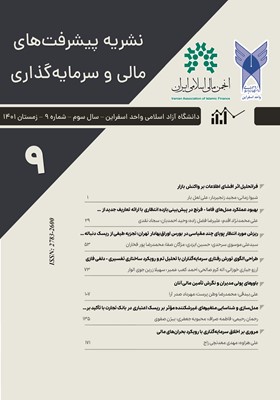Dynamic multi-scale expected shortfall in Tehran Stock Exchange: a spectral decomposition of tail risk across time horizons
Subject Areas : Risk Management
Seyed Ali Mousavi Sarhadi
1
,
Hosein Izadi
2
*
![]() ,
Mojgan Safa
3
,
Mojgan Safa
3
![]() ,
Mohammadreza Pourfakharan
4
,
Mohammadreza Pourfakharan
4
1 - Department of Financial Management, Qom Branch, Islamic Azad University, Qom, Iran.
2 - Department of Accounting, Islamshahr Branch, Islamic Azad University, Islamshahr, Iran.
3 - Department of Accounting, Qom Branch, Islamic Azad University, Qom, Iran.
4 - Department of Accounting, Qom Branch, Islamic Azad University, Qom, Iran.
Keywords: Tehran Stock Exchange, Spectral Analysis, time horizons, Multi-Scale Dynamic Expected shortfall (DMS-ES), tail Risk,
Abstract :
Purpose: The main purpose of the present study is to investigate the tail risk in the Tehran Stock Exchange using dynamic methods and time series spectral analysis in the form of the dynamic multi-scale Expected Shortfall (DMS-ES).Methodology: In this study, the daily data of Tehran Stock Exchange total index in the period 2011/03/26 - 2022/03/19 were used then extracting the short-term, medium-term and long-term information components of the index return time series, four predictive models of expected fallout (ES) were estimated using Taylor (2017) approach at different time horizons.Findings: The results of estimating the models and back tests show that the expected shortfall (ES) is short-term in nature and the dynamic model using short-term components in the one-day time horizon has the highest efficiency among the introduced models. In addition, the results of comparing the models based on the average loss test show that the use of spectral analysis components increases the efficiency of dynamic predictions of the expected shortfall (ES) at different time horizons.Originality / Value: Finally, according to the results of this study, it is suggested to use dynamic models and signal decomposition analysis algorithms to increase the efficiency of risk criteria predictions.
_||_

